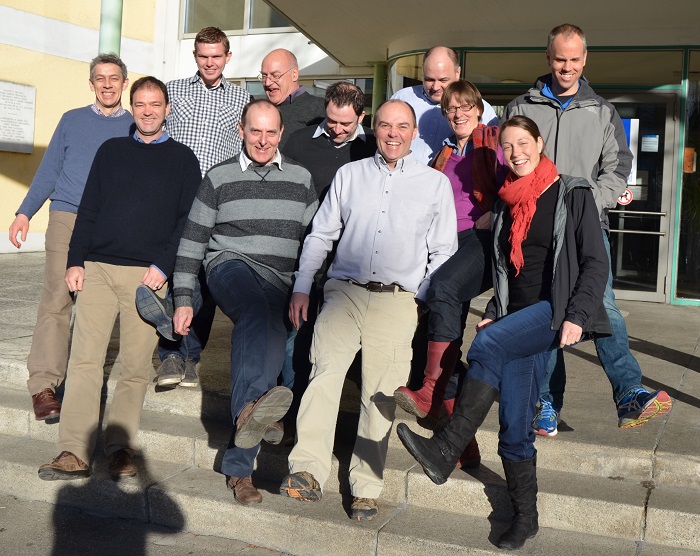
The National Drought Mitigation Center at the University of Nebraska-Lincoln is part of an international project to improve understanding of how drought affects communities, the environment and the economy, and what people can do to prepare. The project is one of the first supported by a recently formed international consortium of agencies that fund environmental change research.
Researchers from the NDMC, the Hydrology department at the University of Freiburg, the Centre for Ecology and Hydrology in Wallingford, England, the Open University in Milton Keyes, England, and the Commonwealth Scientific and Industrial Research Organization in Australia jointly received one of the inaugural grants in 2013 from the Belmont Forum. They met in Freiburg, Germany in January 2014 to officially kicking off the DrIVER project, which stands for Drought Impacts: Vulnerability thresholds in monitoring and Early-warning Research.
The Forum, established in 2009 at a meeting in Maryland, represents a collaborative effort by the world's major funders of global change research to "provide knowledge that can be used to confront the most significant challenges society faces in managing an increasingly congested and resource-hungry world," according to an article by its founders in the July 10, 2012 edition of EOS. The forum includes the main funders of scientific research in many countries, including the U.S. National Science Foundation. The Belmont funders specifically look for projects that incorporate both physical and social sciences.
NDMC investigators are Cody Knutson, who leads the NDMC's Planning and Social Science program area, and Mark Svoboda, who heads the NDMC's Monitoring program area. The drought center will receive about half a million dollars over three years for its portion of the project.
"We have been talking about exploring the relationship between impacts and indicators for a long time," Svoboda said. "In fact, one of our initial motivations in developing the Drought Impact Reporter and its database in 2005 was to one day use it for this type of research and application. Nearly ten years later, it is exciting to embark on this project with our partners from three continents. It is really long overdue and to date hasn't been investigated to the extent we're proposing."
The researchers in the U.S., Australia and the European Union will compare indicators of physical drought with data on drought impacts to inform the development of enhanced drought monitoring and early warning systems. They will also use scenario-based "drought games" at workshops in selected locations to analyze decision-making, including use of monitoring and early warning systems, related to drought. The workshops will focus on water supply security, conflicts and trade-offs between human and environmental use, and will involve major water suppliers, regulators and other interest groups. Conducting similar workshops on three different continents will help researchers identify general principals as well as specific considerations that may apply under different circumstances.
"During the project, the team will investigate linkages between drought indicators and its impacts for a range of sectors," Knutson said. "The workshops will allow us to investigate public water suppliers as case studies. Building on the past successes of similar strategy games in the U.K. and 'drought tournaments' in the U.S. and Canada, the project team will use the best of both approaches to assess the use of drought monitoring and early warning information and other drought management strategies by water managers."
— Kelly Helm Smith, National Drought Mitigation Center
More details at: http://go.unl.edu/sho7